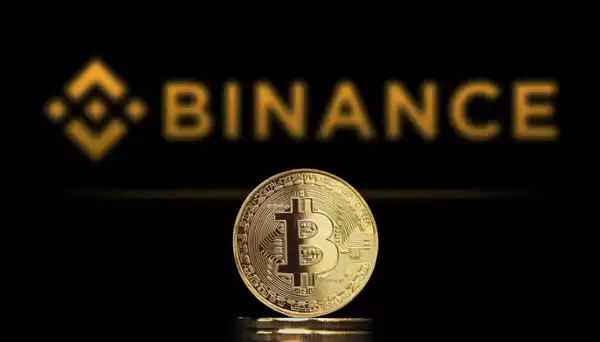-
 Bitcoin
Bitcoin $114500
-0.31% -
 Ethereum
Ethereum $3648
1.11% -
 XRP
XRP $3.033
-0.27% -
 Tether USDt
Tether USDt $0.9999
-0.01% -
 BNB
BNB $758.5
-0.32% -
 Solana
Solana $167.5
1.48% -
 USDC
USDC $0.9998
-0.02% -
 TRON
TRON $0.3331
0.74% -
 Dogecoin
Dogecoin $0.2039
0.25% -
 Cardano
Cardano $0.7419
-0.46% -
 Hyperliquid
Hyperliquid $39.21
2.66% -
 Stellar
Stellar $0.4049
-1.95% -
 Sui
Sui $3.483
-0.56% -
 Bitcoin Cash
Bitcoin Cash $570.8
2.89% -
 Chainlink
Chainlink $16.67
-0.57% -
 Hedera
Hedera $0.2470
-1.57% -
 Ethena USDe
Ethena USDe $1.001
0.00% -
 Avalanche
Avalanche $22.36
1.52% -
 Litecoin
Litecoin $123.4
4.35% -
 UNUS SED LEO
UNUS SED LEO $8.989
0.09% -
 Toncoin
Toncoin $3.324
-2.40% -
 Shiba Inu
Shiba Inu $0.00001219
-1.30% -
 Uniswap
Uniswap $9.811
2.54% -
 Polkadot
Polkadot $3.662
-0.07% -
 Monero
Monero $295.5
-3.85% -
 Dai
Dai $1.000
0.01% -
 Bitget Token
Bitget Token $4.345
0.24% -
 Cronos
Cronos $0.1380
0.95% -
 Pepe
Pepe $0.00001044
-1.14% -
 Ethena
Ethena $0.5981
-4.24%
Binance contract trading steps
With Binance's contract trading platform, individuals can speculate on the future price of cryptocurrencies like Bitcoin without actually owning the underlying asset, offering opportunities for potential profit and risk management.
Nov 10, 2024 at 09:14 pm

Binance Contract Trading: A Comprehensive Guide
Introduction
Binance is the world's leading cryptocurrency exchange, offering a wide range of trading options, including spot trading, margin trading, and contract trading. Contract trading, also known as futures trading, allows traders to speculate on the future price of an asset without actually owning the underlying asset. This guide will provide a step-by-step explanation of how to trade contracts on Binance.
Step 1: Create a Binance Account
- Visit the Binance website (https://www.binance.com) and click on "Sign Up."
- Provide your email address and create a strong password.
- Complete the verification process by providing your personal information and uploading a government-issued ID.
- Once your account is verified, you can deposit cryptocurrencies into your account and start trading.
Step 2: Understand Contract Trading
- Contract trading involves speculating on the future price of an asset, such as Bitcoin or Ethereum.
- Traders use contracts to speculate on the direction of the market, whether it will go up (bullish) or down (bearish).
- Contracts have an expiration date, at which point the trader must either settle the contract or roll it over to a new contract.
- Traders can use leverage to increase their potential profits, but this also increases their risk of loss.
Step 3: Choose a Contract
- Binance offers a wide range of contract types,包括永续合约、交割合约和期权合约。
- 永续合约没有到期日, позволяя трейдерам удерживать позиции в течение неограниченного периода времени.
- 交割合约有到期日,在到期时必须结算或展期。
- 期权合约给持有人权利,但没有义务在到期日以特定价格买卖特定数量的资产。
- Choose a contract that aligns with your trading strategy and risk tolerance.
Step 4: Place an Order
- Once you have chosen a contract, you can place an order.
- There are two main types of orders: market orders and limit orders.
- Market orders are executed immediately at the current market price.
- Limit orders are executed only when the market price reaches a specified price.
- Choose the order type that is most appropriate for your trading strategy.
Step 5: Manage Your Risk
- Risk management is a crucial aspect of contract trading.
- Use stop-loss orders to limit your potential losses in case the market moves against you.
- Monitor your positions regularly and adjust your strategy as needed.
- Consider using leverage wisely to maximize your potential profits while minimizing your risk.
Step 6: Withdraw Your Profits
- Once you have closed your positions and made a profit, you can withdraw your funds from Binance.
- Withdrawals can be made to your bank account or to another crypto wallet.
- Follow the instructions on the Binance website to initiate a withdrawal.
Additional Resources
- Binance Contract Trading Guide: https://www.binance.com/en/support/faq/how-to-start-with-contracts-70ad3d7171c94267a4500d8707654169
- Binance Academy: https://academy.binance.com/en
- Binance Help Center: https://www.binance.com/en/support
Disclaimer:info@kdj.com
The information provided is not trading advice. kdj.com does not assume any responsibility for any investments made based on the information provided in this article. Cryptocurrencies are highly volatile and it is highly recommended that you invest with caution after thorough research!
If you believe that the content used on this website infringes your copyright, please contact us immediately (info@kdj.com) and we will delete it promptly.
- Jurassic World Meets Canadian Coin: An Unexpected Inspiration
- 2025-08-06 00:50:12
- Decentralized Provers Take Center Stage: Mainnet Launches and Network Growth
- 2025-08-06 00:30:12
- Crypto Coins, Solana, and Investing Returns: Finding the Next Big Wave
- 2025-08-06 01:10:12
- BlockchainFX ($BFX): The Crypto Presale Set to Explode (Visa Access and More!)
- 2025-08-06 00:50:12
- ElevenLabs, AI Music, and Artist Licensing: Navigating the New Soundscape
- 2025-08-06 00:30:12
- Crypto Presales to Watch: WeWake Finance & the Rise of User-Friendly Web3
- 2025-08-06 00:35:12
Related knowledge

Why is my Bitstamp futures position being liquidated?
Jul 23,2025 at 11:08am
Understanding Futures Liquidation on BitstampFutures trading on Bitstamp involves borrowing funds to open leveraged positions, which amplifies both po...

How to report Bitstamp futures for taxes?
Jul 30,2025 at 08:35am
Understanding Bitstamp Futures and Taxable EventsWhen trading Bitstamp futures, it’s essential to recognize that these financial instruments are treat...

Does Bitstamp offer inverse contracts?
Jul 23,2025 at 01:28pm
Understanding Inverse Contracts in Cryptocurrency TradingIn the realm of cryptocurrency derivatives, inverse contracts are a specific type of futures ...

What is the difference between futures and perpetuals on Bitstamp?
Jul 27,2025 at 05:08am
Understanding Futures Contracts on BitstampFutures contracts on Bitstamp are financial derivatives that allow traders to speculate on the future price...

How to find your Bitstamp futures trade history?
Jul 23,2025 at 08:07am
Understanding Bitstamp and Futures Trading AvailabilityAs of the current state of Bitstamp’s service offerings, it is critical to clarify that Bitstam...

Can I use a trailing stop on Bitstamp futures?
Jul 23,2025 at 01:42pm
Understanding Trailing Stops in Cryptocurrency TradingA trailing stop is a dynamic type of stop-loss order that adjusts automatically as the price of ...

Why is my Bitstamp futures position being liquidated?
Jul 23,2025 at 11:08am
Understanding Futures Liquidation on BitstampFutures trading on Bitstamp involves borrowing funds to open leveraged positions, which amplifies both po...

How to report Bitstamp futures for taxes?
Jul 30,2025 at 08:35am
Understanding Bitstamp Futures and Taxable EventsWhen trading Bitstamp futures, it’s essential to recognize that these financial instruments are treat...

Does Bitstamp offer inverse contracts?
Jul 23,2025 at 01:28pm
Understanding Inverse Contracts in Cryptocurrency TradingIn the realm of cryptocurrency derivatives, inverse contracts are a specific type of futures ...

What is the difference between futures and perpetuals on Bitstamp?
Jul 27,2025 at 05:08am
Understanding Futures Contracts on BitstampFutures contracts on Bitstamp are financial derivatives that allow traders to speculate on the future price...

How to find your Bitstamp futures trade history?
Jul 23,2025 at 08:07am
Understanding Bitstamp and Futures Trading AvailabilityAs of the current state of Bitstamp’s service offerings, it is critical to clarify that Bitstam...

Can I use a trailing stop on Bitstamp futures?
Jul 23,2025 at 01:42pm
Understanding Trailing Stops in Cryptocurrency TradingA trailing stop is a dynamic type of stop-loss order that adjusts automatically as the price of ...
See all articles

























































































